This 3-part series on the dynamic nature of street art, graffiti, and murals—as both symbols of cultural consciousness and cultural commodities—highlights these genres as viable assets within the regional and global creative economy of today. In this second segment, the author considers the financial side of local art initiatives.
I am pleased to share this second segment in my three-part series concerning dialogues around street art, graffiti, and public art projects in the Capital Region. In the first segment, I discussed these topics from a Troy-townie perspective.
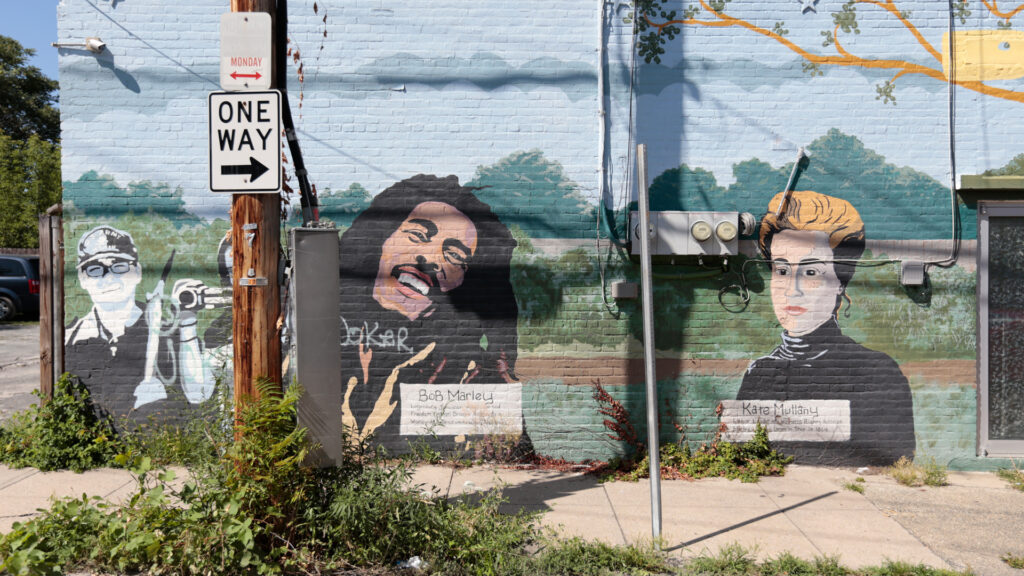
For this installment, I explored the mural-street-art-graffiti-scene from the financial side of the equation. We all know that art is also about “biz-naz” at every level, so how does the money make its way into the street as street art? To understand more, I turned my focus to the creative economies of Troy, Albany, and Glens Falls as a trifecta case study. Each of these cities boasts a unique vibe with respect to murals and public art projects. I was delighted to communicate with several esteemed arts professionals for greater insight, including Elizabeth Reiss, Executive Director of the Arts Center of the Capital Region; Tony Iadicicco, Executive Director of the Albany Center Gallery; Chad Robinovich, Artistic Director of New Works for Constellation Stage & Screen; and Casey Polomaine, Executive Director of the Albany Barn.
Each of these conversations was lively and informative; herein I comment on some of the facts that were presented to me. Chad Robinovich—a champion of Glens Falls and a member of the Glens Falls Arts District Committee—spoke passionately about community endeavors to “beautify a beautiful city” that is also his home. Chad discussed the ongoing efforts of the New York State’s Downtown Revitalization Initiative (DRI), an organization that serves as a cornerstone of the State’s economic development program.
While Glens Falls already has an established arts district area, the DRI has supported the existing infrastructure while expanding local arts programming. Chad clarified the DRI is not only solely about funding the arts, however, some of the total $10 million grant for Glens Falls was indeed used for public art initiatives.
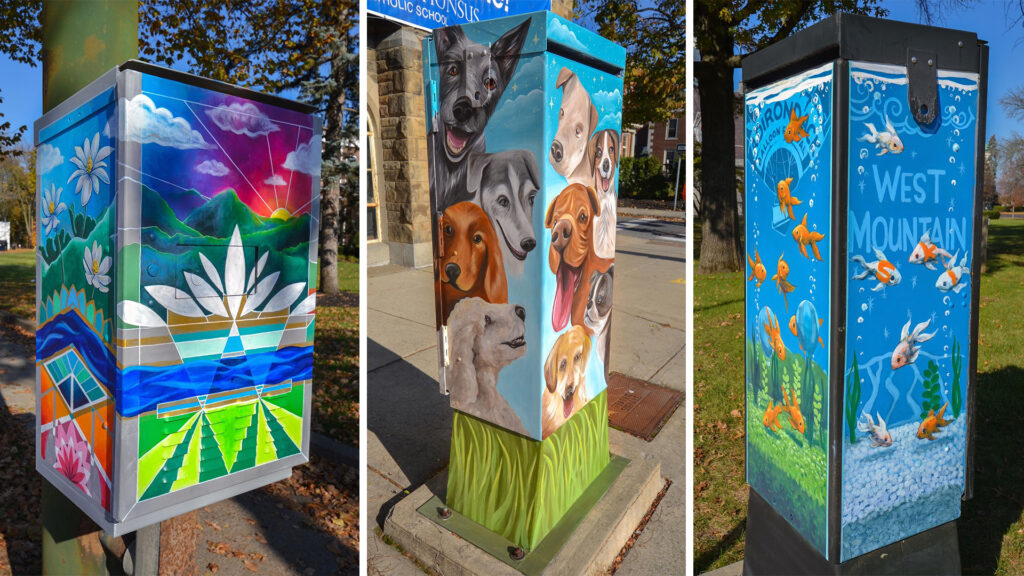
He also shared with me that a micro grant from the Touba Family Foundation resulted in a popular project that took place last year, where local artists—including Kevin Clark, Shelley Fairbanks, Leah Hofgesang, Stephanie Vaus, Rodney Bentley, Hannah Williams and Olga Aleksandrova—were awarded funds to paint electrical boxes around Glens Falls. He spoke sincerely about the impact of that project and how the community reacted so positively to the colorful designs, stating “a little bit goes a long way” with regard to the public reception for art.
During our call Chad spoke of Glens Falls as a place with a “speak art” vibe and he emphasized the “instant visual impact” of murals as a point of engagement. This year, the Glens Falls Arts District Committee put out a nationwide call for artists to apply for a large-scale mural project. Over the next two months, the committee will allocate approximately $75,000 to install three new mural designs around Glens Falls by artists Hannah Williams (Glens Falls, NY), Toni Ardizzone (Texas), and Jesse Melanson (Los Angeles, CA).
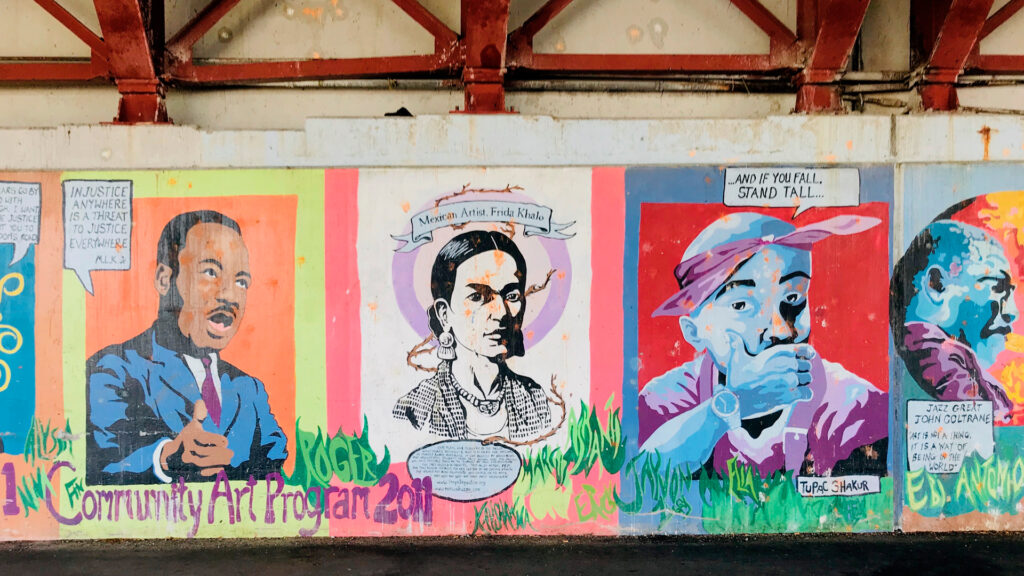
Turning to Troy, we encounter a thriving local energy at the Arts Center for the Capital Region (ACCR). Director Liz Reiss is a seasoned arts professional with diverse experience overseeing art in the public realm. During our conversation, she emphasized her belief that “art belongs to everyone” and that art functions as a tool for revitalization. Liz also spoke candidly about the challenge to obtain annual funding and she considers the role of the institution as the “translator” of art for the community. She carefully posed various questions with respect to the best use of funding: What needs help? Who is asking for that change? Who is most likely to benefit? Liz cited city murals as one of several modes that bring local artists further into the public realm and she lauded the resounding success of the Uniting Line, a project that received funds from Bloomberg’s “Asphalt Art” initiative. This highly visible series of murals features artwork by Jade Warrick. Originally from Los Angeles, Warrick is a Capital Region-based visual designer who focuses on bringing art and wellness programming into BIPOC and marginalized communities.
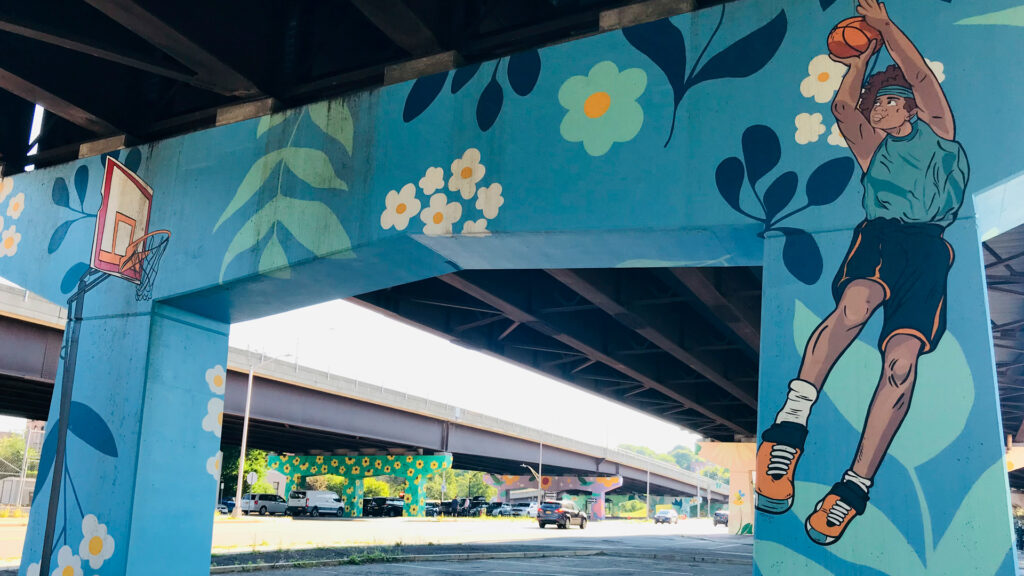
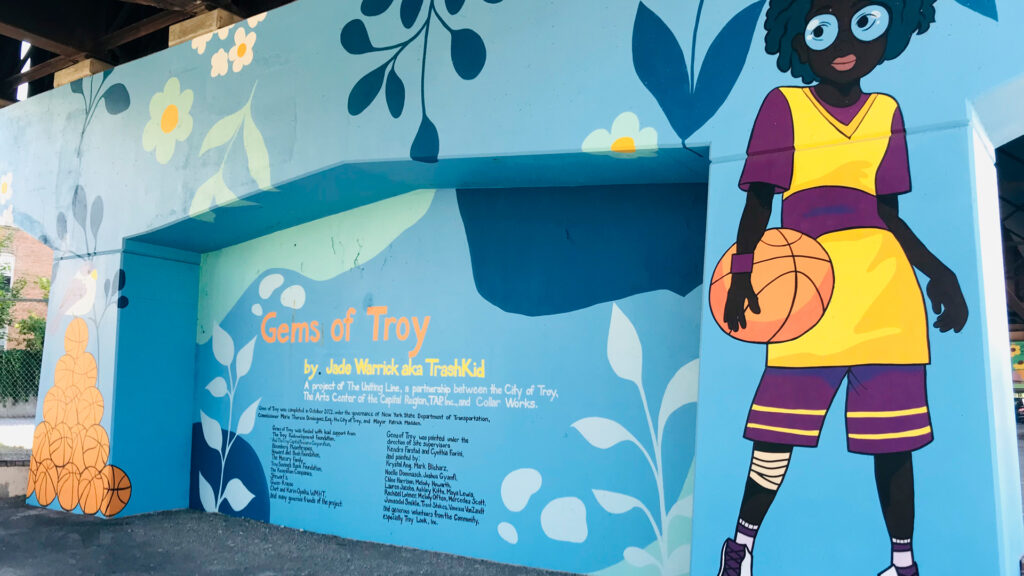
Since staring the program in 2018, Liz confirmed the ACCR has spent approximately $375,000 on various public art projects around Troy, including the Uniting Line, Franklin Alley, School 2, Troy to Troy Murals (the bulk of which was used for the Uniting Line). The ACCR is currently working to realize the Troy Glo project that will present a distinct category of public art—light sculptures—and will feature the work of architects and designers as part of these plans. Troy Glo will launch in December 2022 to coincide with the annual Troy Victoria Stroll.
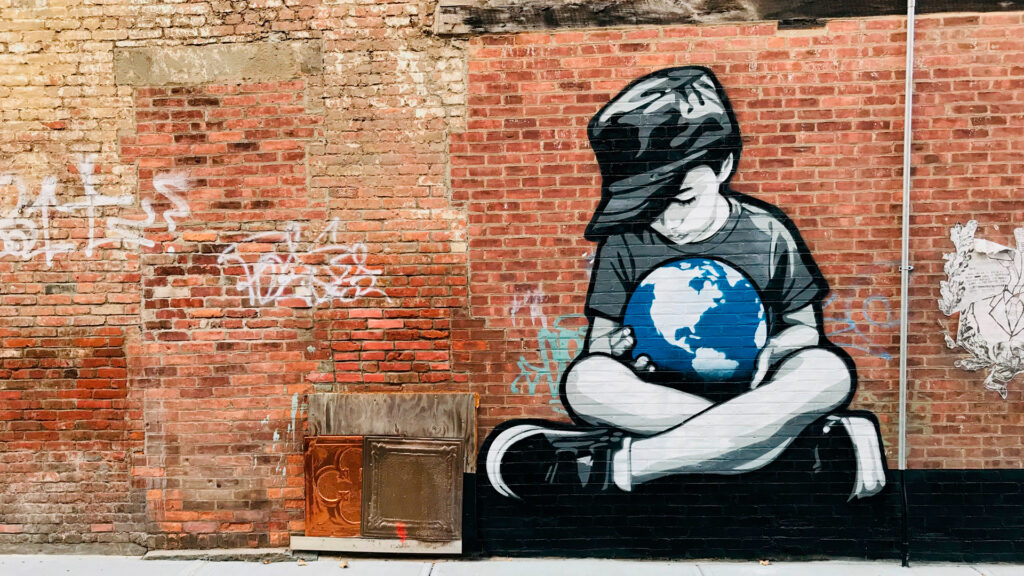
Next I connected with Casey Polomaine regarding her work with public art projects in Albany. She spoke of the great success of the Capital Walls project, a collaboration between Albany Barn, Albany Center Gallery, and the Albany Parking Authority. The Capital Walls murals aim to inspire all walks of life with buoyant works of art installed in various locations around downtown Albany. Programming designed to promote and educate the community about these artworks include walking tours (docent led and self-guided), bike tours in partnership with the Capital District Transportation Authority, and the Artful Albany podcasts with Discover Albany.
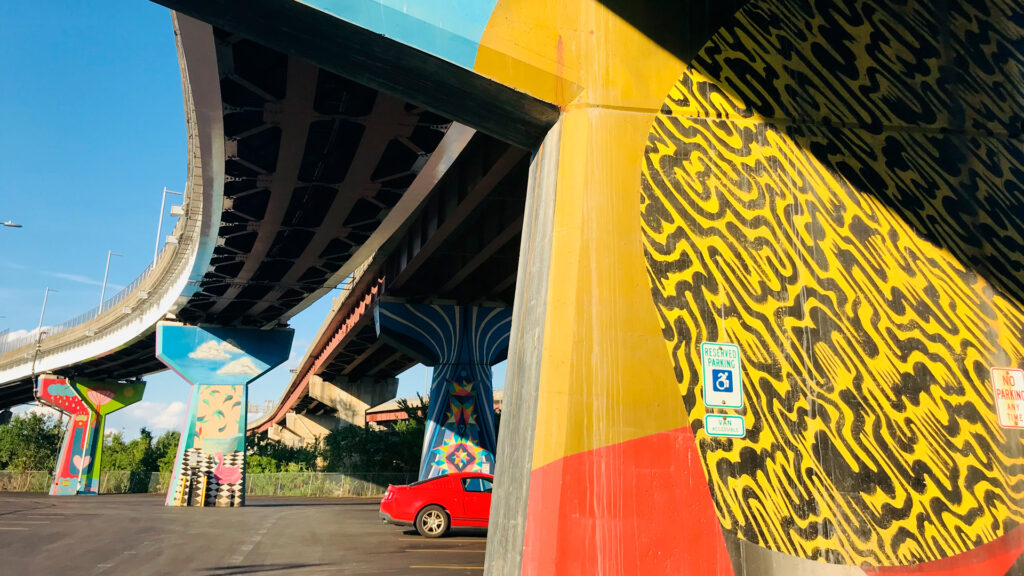
Arzu Fallahi, and NDA in Albany, NY | Photo: Taliesin Thomas
Casey explained the ongoing efforts of the Capital Walls program, stating that the city is currently working to expand the program and is actively looking for new walls. She spoke of the sheer joy of public art that is made accessible to all and how the murals naturally “uplift your spirits” as works of art that break down barriers while also “putting money in the pockets of artists.”
Rounding out the trifecta focus, Tony Iadicicco provided additional information about Capital Walls. Started in 2016, the project now boasts 16 murals by local, regional, national, and international artists. Chosen from an open call, many of these artists are first time muralists while others are well-established. Tony indicated that each muralist was paired with an available, funded wall based on their style. Once selected, the muralist works closely with Tony and his team to create the work on-site. He indicated that over $150,000 in public art has been funded by Albany Parking Authority and an additional $72,000 was awarded to Albany Center Gallery as part of the DRI award (with additional partner Downtown Albany BID and Capital Walls partners).
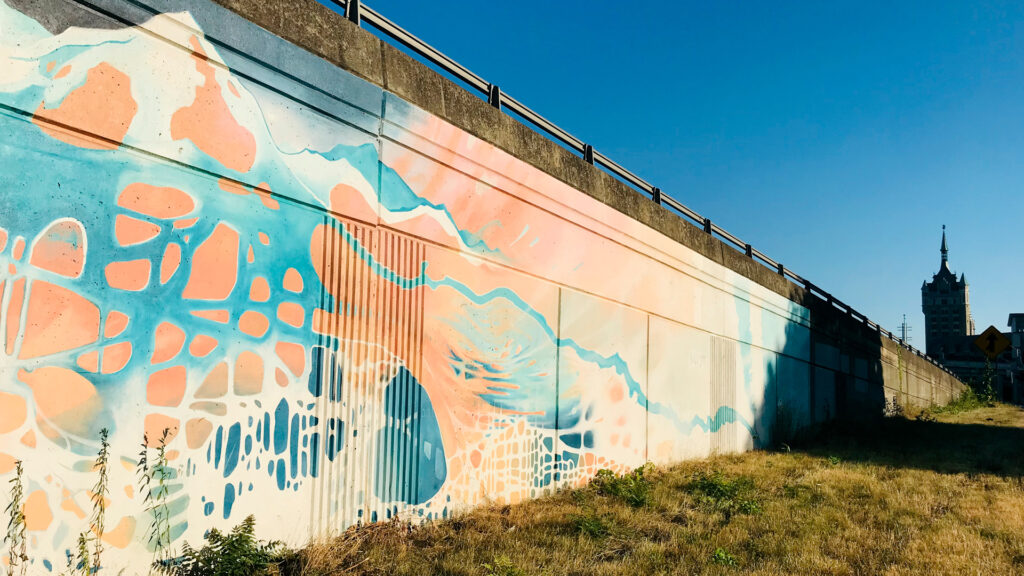
Albany Barn also received additional funds for the Schenectady DRI for murals to be installed in Schenectady, along with a Capital Walls mural in Schenectady on Albany Street (completed in 2021). In an email to me, Tony included these comments from Matthew Peter of the Albany Parking Authority: “the murals act as landmarks, promote walkability and tourism, and restore a sense of place … At the same time, the city is able to attract and promote local art and artists and support the local creative economy, creating a win/win situation for all involved.” On a recent summer afternoon, I toured the Capital Walls murals and it was indeed a thrill to encounter these magnificent murals, each one both inspired and inspiring. As these and other arts professionals attest, the “speak art” vibes of cities such as Troy, Albany, and Glens Falls are a vital part of the artistic energy and business goals of our region as a whole.
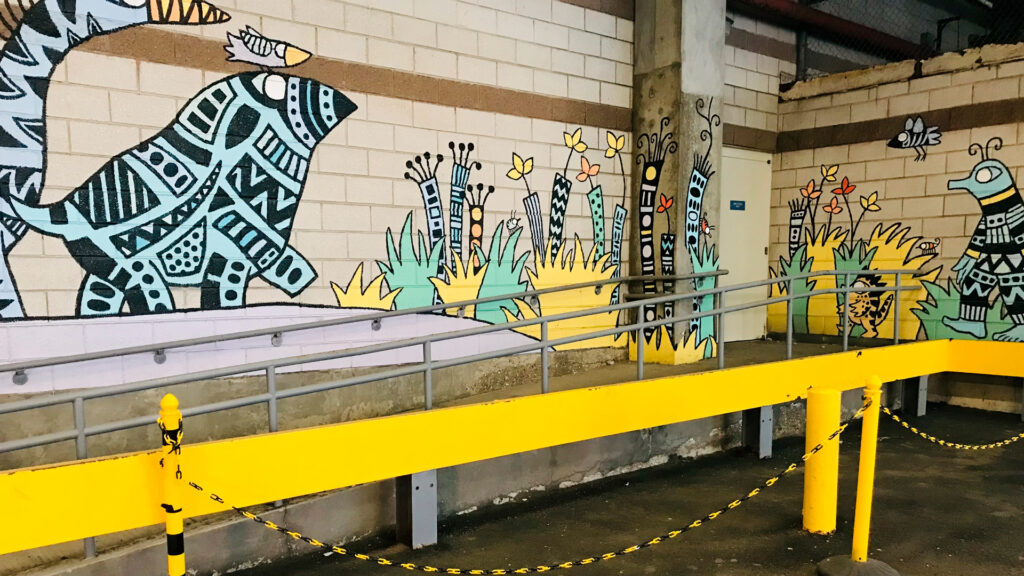
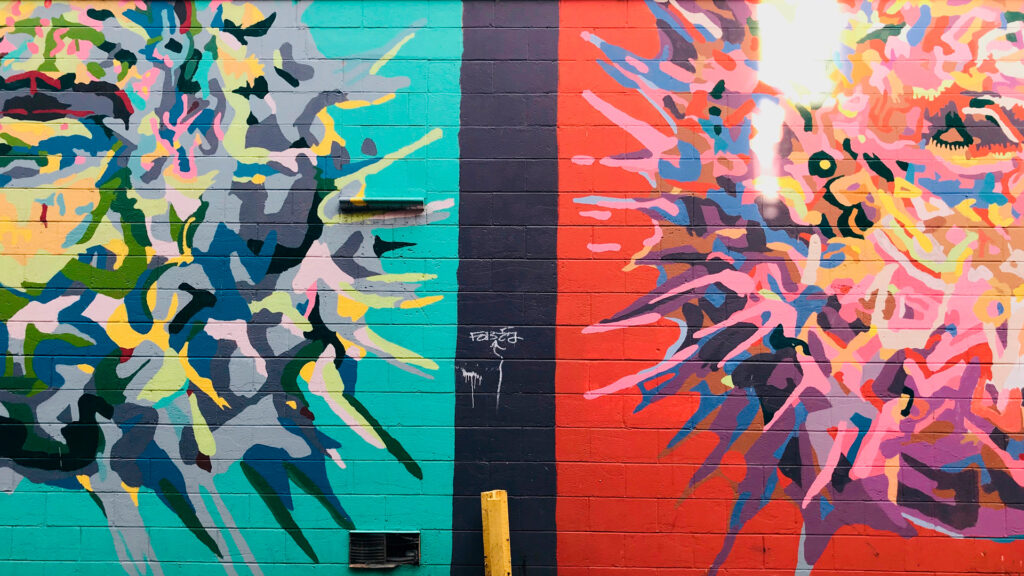
PART III: In the next installment, we consider the “macro level” of these topics and explore how art initiatives in Capital Region fit into the arts ecosystem on a national—and international—scale.
For more check out Part I of the series : Street Art / Graffiti as Gravity – Part I of III : A Townie Perspective
Taliesin Thomas, Ph.D. is an artist-philosopher, writer, lecturer, and collector based in Troy, NY. Since 2007, she is the founding director of AW Asia, NY and the collection manager of Art Issue Editions, NY—two private art collections that are the foundation for collaborations and projects with artists and museums worldwide. Thomas has lectured and published widely on contemporary art. She is the director of the Artist Training Initiative and a critic for the Critical Forum program at the Arts Center for the Capital Region, NY and she is a faculty member at School of Visual Arts, NY. Thomas studied studio art, aesthetics, theory, and philosophy at Bennington College, Columbia University, and The Institute for Doctoral Studies in the Visual Arts.